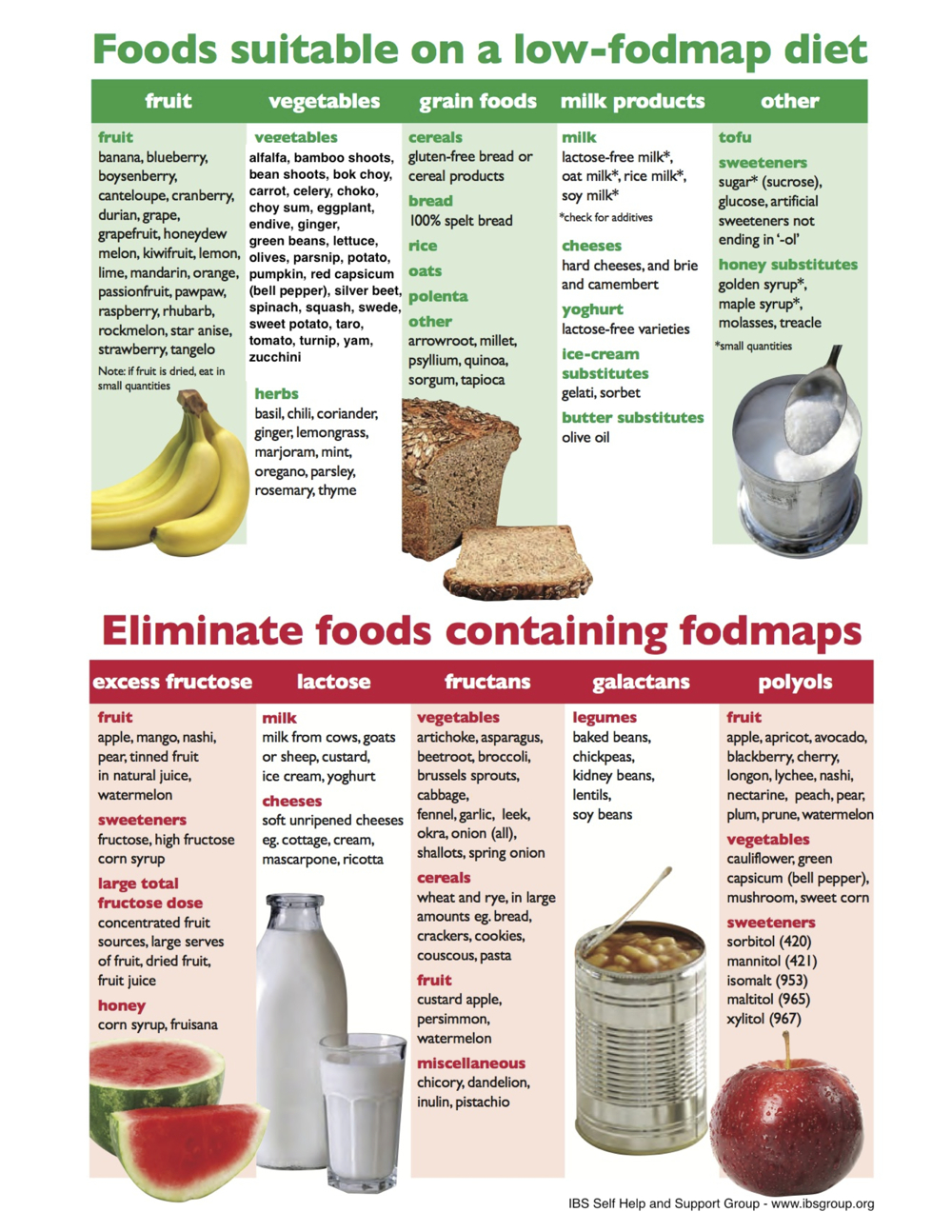If you have symptoms of diarrhea, constipation, gas, bloating and/or cramping, you may want to try a different diet. That’s where the Low FODMAP diet comes in.
The Low FODMAP Diet
If you are wondering what FODMAP is, you aren’t alone. FODMAP is an acronym for Fermentable Oligo-Di-Monosaccharides and Polyols. Let’s dive into these long words further.
Saccharides, oligo-, di- and mono-, are sugars. Not all of these sugars cause diarrhea, constipation or other problems for people’s intestines, but some of them do. We’ll dive into that later.
Polyols are sugar alcohols that are used to sweeten foods. They are used in sugar-free products to sweeten, to increase the creaminess of the food and to increase the food’s shelf-life.
The saccharides and polyols that cause gastrointestinal problems are called “fermentable.” To explain fermentable, it’s time to look at the digestive tract. Food is broken down and absorbed in the small intestines. What is not fully broken down moves on to the large intestines or colon. The large intestines removes water from this undigestible material. Unfortunately, there are foods that are osmotic, meaning that they pull water back into the intestinal tract.

Back to high FODMAP: to make beer, you need a microorganism, sugar and water. Gas and alcohol are the products.This is fermentation and it happens in the colon in the presence of bacteria, sugars and water which high FODMAP foods supply. Gas pain, bloating, cramping, more frequent movements and diarrhea may result for some people, especially people with Irritable Bowel Syndrome.
What is Irritable Bowel Syndrome?
April is Irritable Bowel Syndrome Awareness Month. Over 35 million people in the US are affected by Irritable Bowel Syndrome or IBS. IBS is a condition that researchers believe is linked to colon muscle contractions. Specifically, the contractions are longer, more frequent or occur more readily than normal. The syndrome does not cause changes in the lining of the digestive tract nor does it increase the risk of colorectal cancer. However, it is a condition that causes pain, cramps, gas, bloating, diarrhea or constipation and embarrassment.
According to research by the American Gastroenterology Association, 67% of people with IBS symptoms wait over a year before consulting their physician about their symptoms. Another 11% wait more than 10 years before going to a doctor about IBS.
Below is a list of high FODMAP foods to avoid or reduce in your diet if you are experiencing symptoms of IBS, as well as a list of low FODMAP foods that you can eat.






